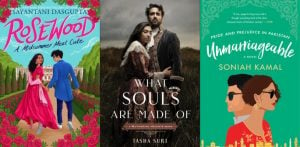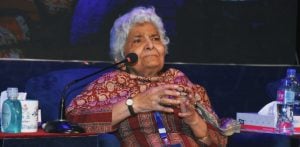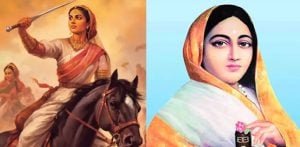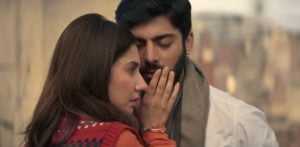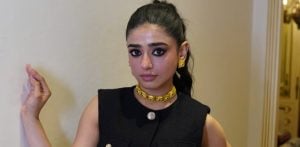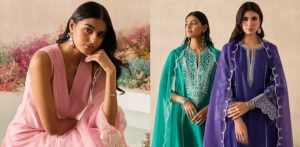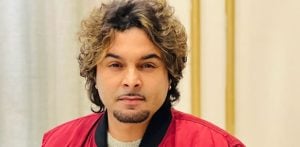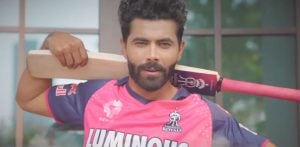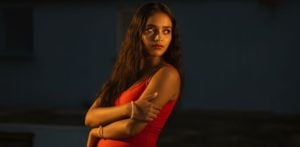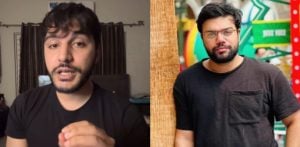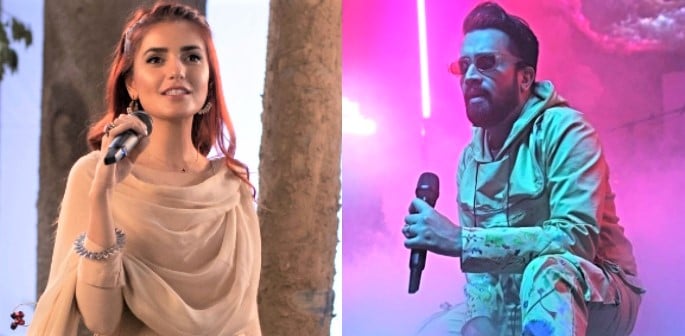"our music, our art and our culture are occasions and opportunities"
Coke Studio Pakistan has been a staple requirement for South Asian music lovers since 2008.
Its latest instalment, Season 14, fuses what you already love about Pakistan’s rendition of the platform with a modern vibe.
It is steeped in classical lyricism and emotion, but shaken up entirely with new melodies and electronic beats and presented back with a contemporary twist.
The result: a fresh and innovative take on the already popularised Pakistani live music scene.
There’s something for everyone – new age music, original melodies and stunning vocals. Put simply, it’s fusion done right.
That’s not all. The addition of innovative art direction, set design, costuming and choreography across the 13-song tracklist is enchanting and inspiring.
This is a progressive Coke Studio Pakistan that demands your attention.
Coke Studio Pakistan Reimagined

Anyone with even a tiny interest in the musical prowess of the Indian sub-continent will surely have been flooded with videos taking them to Coke Studio’s live sessions.
These sessions feature some of the nation’s most revered musicians and artists alongside some lesser-known faces and underground stars.
What’s intriguing is that Coke Studio is not just enjoyed by Pakistani music fans but global lovers of music, too.
Just type ‘Coke Studio reaction’ into YouTube and enjoy the variety of YouTubers from all corners of the world being introduced to Pakistani music for the first time.
Watching them become utterly spellbound by the high production value, effortless singing and catchy rhythms certainly evoke a sense of pride.
If the previous portfolio of the live music platform was not impressive enough, Season 14 of Coke Studio Pakistan will amaze the masses.
It has left its 11 million (and growing) subscribers mesmerised by the mix of modern beats and traditional sounds.
Not just that, the meticulously planned collaborations are also accompanied by incredible visuals.
High-quality production has always been a given when it comes to Coke Studio Pakistan, which was originally created by Rohail Hyatt.
But now the show is under the supervision of producer Zulfiqar ‘Xulfi’ Jabbar Khan.
So, the traditional live studio setup has been swapped for full music videos that rival anything you might have seen before.
High-Concept Art Direction and Set Design
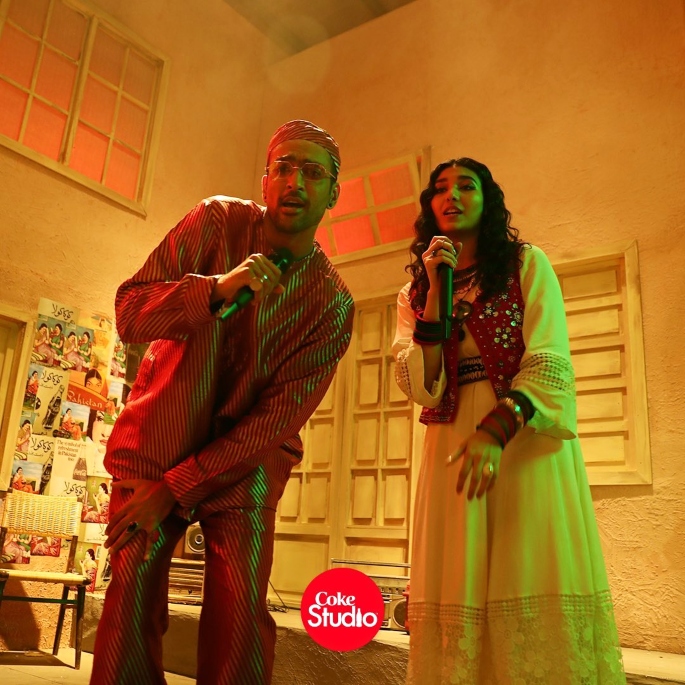
Let’s reiterate: these are not just any standard music videos. These are high-concept, painstakingly intricate works of art in their own right.
A celebrated vocalist, guitarist, songwriter and all-around visionary, Xulfi explains his vision in the BTS videos that follow each new song:
“Every song has its own set. We’ve got five video directors on board.
“So, we have a really interesting and huge team. New people. A new vision as well. So, every song has its art direction in progress.
“We are giving the visuals the same importance because that’s how you narrate the story.
“So, now we are not just capturing the musicians’ performance, we’re capturing their narrative, their story… the song’s narrative.”
You will already be familiar with the magical genius of Xulfi as a music producer and mentor for Nescafé Basement, which is renowned for giving a platform to underground artists.
Undoubtedly, Xulfi’s exposure to the emerging sounds of newer generations has had a huge influence on his rendition of Coke Studio Pakistan Season 14.
Interestingly, the new season features no covers.
All material has been originally created by the artists themselves along with Xulfi and his team of already established producers, musicians and singers.
This dream team of associate producers and collaborators have helped Xulfi realise his vision.
They include the likes of singer and songwriter Abdullah Siddiqui and music producer ActionZain.
Not to mention the lyricist and the lead vocalist of Soch The Band, Adnan Dhool; and the lead vocalist of Karakoram, Sherry Khatak.
Xulfi adds: “I select my team on the basis of their sensitivity levels as well. They have to be emotional, they have to be expressive.
“So, such people will get affected by this and the only way to perform artistically is by getting affected.”
Showcasing New Material and Unexpected Collaborations
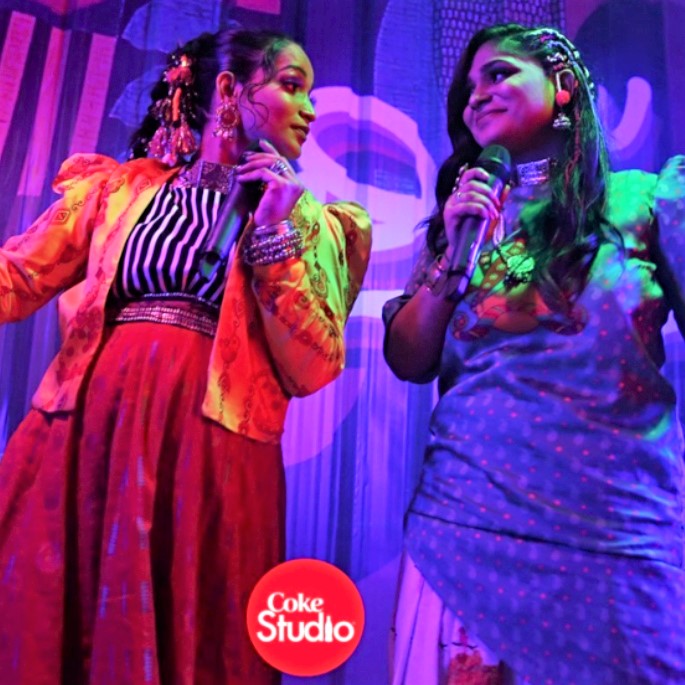
Navigating through the tracks, you cannot help feeling that there is a deliberate purpose and intent behind each sound, lyric and instrument used.
It’s as though you are part of a wider vision – a campaign if you will. Of course, none of this can be achieved at the hands of just one person.
It is a truly collaborative process fuelled by creative freedom, willingly given to every single performer. This is very evident when watching the videos.
There is never a moment where it feels like the musical direction has been forced; it is an inclusive and immersive experience that caters to all.
Music sensation Meesha Shafi clarifies this in the BTS video for ‘Muaziz Saarif’:
“The other thing that is completely different is that I have never performed a song written by me here at Coke Studio.
“The producers of the show completely left it up to us. As an artist, that’s another big thing.”
“It’s like they just believed in our songwriting voice… like what do you want to say? How do you want to say it? What do you want to write? What do you want to make the song sound like?”
The collaborations between the musicians and artists have also been taken to the next level.
Throughout the season, you’re constantly met with unexpected blends of various melodies and styles.
There is a fusion of rap, pop, R’n’B, rock and folk sounds, showcasing the seemingly infinite scope of Pakistani music. Indeed, there is something for everyone.
Essentially, it’s Coke Studio with a twist.
Fans can welcome back artists who have enjoyed a long and fruitful association with the platform.
But, they’ll also be invited to meet both established and upcoming stars of the underground indie scene.
This new generation of talent is determined to shake up the mainstream music scene for the modern and digital age.
Arguably, it’s never been a more aspirational time to be a new artist in Pakistan.
So, are you ready to dive into what Season 14 has to offer? Let’s begin our magical journey with the iconic capabilities of Abida Parveen and Naseebo Lal.
‘Tu Jhoom’ – Naseebo Lal x Abida Parveen

From the get-go, you get the impression that Xulfi means business.
His first outing pays homage to the essence of Coke Studio Pakistan – a continuing legacy that is based on being able to capture, enchant and beautifully awaken the senses.
Xulfi recruits into his camp the queen of Sufism, Abida Parveen, a gifted poet in her own right.
It’s as if Xulfi is telling us that if a legend like Abida Ji is happy to do justice to his vision and Adnan Dhool’s lyrics, then we, as hardcore Coke Studio Pakistan fans, can trust him too.
Well, if the magic he created on Nescafé Basement is anything to go by, he needn’t have worried. We’re happy to do what he asks: let go of our worries and simply ‘Jhoom’ (whirl).
Abida Ji recalls in the BTS video:
“[There is] a spiritual… a certain openness that this song has, and the rhythm of it… it is intoxicating.
“This has a trance-like feeling. It possesses a spiritual trance. It’s very unique.”
Adding to this unique collaboration is a powerhouse of the Pakistani music industry, Naseebo Lal.
In the BTS footage, we can see Xulfi explaining how the lyrics detail her own journey through music:
“I have learnt this from you. I have only learnt this from you because you have always stood your ground with the troubles you faced. All with a smile on your face.”
Thus, each song is a careful curation; the penned words emerge from a place that is brutally real. There is vulnerability but also immense power.
You gain the understanding that, ultimately, there is no separation between the artist and their art, between music and love, and between love and the beyond.
Aspects of the song will likely make you recall the iconic ‘Chaap Tilak’ from Season 7, which famously featured Ustad Rahat Fateh Ali Khan alongside Abida Ji.
This time, though, the whole concept centres on two artists – Naseebo Ji and Abida Ji. They face each other and have an honest conversation, as realised by the video director Zeeshan Parvez.
The BTS footage of the two legends interacting is undeniably wholesome to the point where you start to wonder why it took so long for a collaboration to happen in the first place.
Naseebo Lal enthuses in the BTS video:
“Abida Ji is a cherished asset of Pakistan. She is an asset to the whole world. Honestly, I am a huge fan of hers. Whenever I look at her, I start crying.”
Interestingly, this is also one of the first instances in the history of Coke Studio Pakistan of seeing dancers join the singers and musicians.
Director of choreography Saad Sheikh has envisaged a mixed ensemble that combines modern contemporary dance, Sufism and hip-hop:
“We have mixed popping, locking and all other genres to make something unique.”
‘Kana Yaari’ – Kaifi Khalil x Eva B x Abdul Wahab Bugti

Arsalan Hasan, an associate music producer, explains Xulfi’s vision behind this regional folk song with a modern beat:
“Imagine it’s a Balochi song, but it’s also a pop song. It should play in people’s cars… I want to dance to this song.”
What materialises is a track that is upbeat, contemporary and addictive.
It welcomes the incredible lyricism of singer Kaifi Khalil and rapper Eva B, communicating betrayal in love.
In addition, we have the folk side expressed by singer Abdul Wahab Bugti and the damaru – a cultural instrument of Balochistan.
‘Kana Yari’ is “an original Balouchi song in a sound that is, for the loss of words, global”, Xulfi explains.
He continues: “I wish the whole world listens to Balochi and sings it.”
The visuals of the song match its lively and infectious vibe.
The use of burnt oranges and deep greens is brilliantly eye-catching. Video director Jamal Rahman explains his thought process:
“I wanted a video that was as dynamic as the song. It’s such a fun and upbeat track. It’s very infectious. You hear it once and it sticks in your mind, so you remember it.
“So, even if you don’t understand the language of it, you will still feel the song.”
The filming process required meticulous preplanning, however, not least because the set features moving walls.
As production designer Hashim Ali explains:
“This was something that really excited me with the set design.
“I think the biggest challenge for this thing was – it’s a mechanical set, [so] the wall needs to move – to come up with a set that was modular.
“[It should look] like small places connected together, but everybody is in a different space.
“And slowly, these walls start moving, and then everybody is actually in the same space vibing together.”
‘Sajan Das Na’ – Atif Aslam x Momina Mustehsan

No Coke Studio season would be complete without viral hitmakers Atif Aslam and Momina Mustehsan. Both artists have enjoyed tremendous success on past series of the platform.
Momina’s Season 9 collaboration with Ustad Rahat Fateh Ali Khan immediately springs to mind.
The contemporary take of ‘Afreen Afreen’ quickly became a viral hit with over 340 million views.
It also carries the unique standing of most likely being a person’s first introduction to Coke Studio Pakistan.
Atif’s international fanbase alone has made him one of the most listened to Pakistani artists on Spotify, with his extensive appeal reaching India, the US and the UK.
For Atif, his global popularity lies in his versatility:
“I’ve always wanted to experiment with a new sound, with new people, with the emerging talent as well. I think people are ready to accept new sounds, new changes.
“I wanted to experiment, channelise my energies into new sounds of music and new genres as well. So this is one genre that I really wanted to explore.
“I never knew in my life that I could do rap. Never knew.”
The song caters to the growing influence of hip-hop in Pakistan. This track, in particular, penned by Adnan Dhool, addresses the consequences of fame.
Included is a beautiful counter-narrative that demonstrates an understanding of your partner’s situation.
But there is also a sense of self-awareness, indicative of the modern Pakistani woman, as conveyed by Momina:
“The way I perceived this was that they are both musicians, right? Because they’re singing to each other.
“So he’s a famous musician, I’m just a home-based musician, so we see him on TV.”
For Xulfi, the storytelling process is fundamental to the creation of an impactful track:
“Creating ideas, thinking [up] narratives. Because the song wins in the narrative. The rest of the process is the icing on the cake.
“The melody isn’t everything. It all matters. But it has to begin from a moment that really matters, from a conversation that really matters, from a narrative that really matters.”
‘Mehram’ – Asfar Hussain x Arooj Aftab

A lesson in devastating heartbreak, the combination of Asfar Hussain and Arooj Aftab’s vocals is nothing short of therapeutic and deeply empathetic.
Xulfi says: “[Mehram is] such a beautiful term to describe everything: abandonment, emptiness and all that you see in the space.”
Asfar Hussain of rock band Bayaan explains his thought process:
“The idea was to portray a dialogue between two people in which they are not blaming each other for anything.
“But they are describing how it was when they were together and how it is now that they are not [together].”
The moody aesthetic of the set design also reflects the sombre rhythm, with Asfar sitting alone, surrounded by countless memories that have been covered in plastic to keep them safe.
The melancholic atmosphere of the video is amplified by Arooj, who is effortlessly able to combine culture and connection in her music.
The Brooklyn-based singer is a Grammy nominee and has made haunting melodies her trademark.
Her voice has the rare power of being able to cut through the core of an individual and unleash their deepest emotions.
Xulfi notes: “She means every word she says, and Asfar as well. And they are very articulate about what they are saying, so you understand each word.
“When that happens, you don’t even have to try to feel affected – you just feel affected.
“And that’s the kind of song that will stay with you for the rest of your lives.”
Arooj admits that the song was just something that really spoke to her right away and checked all of her boxes:
“Pakistan is a country of extreme culture, poetry, dance and music. I mean look at the Urdu language itself. There’s no limit for people like us, where we come from.
“I think music is definitely a therapist and a lifesaver in all good times and bad times. It has always kept me grounded; nothing else really has.”
‘Neray Neray Vas’ – Soch The Band x Butt Brothers

Interestingly, Season 14 marks Soch The Band’s first time performing at Coke Studio Pakistan.
Their chosen track is certainly a departure from the Sufi rock sounds that elevated them on Nescafé Basement (check out ‘Bol Hu‘ featuring Hadiya Hashmi).
Instead, we are treated to a fun Punjabi track that is likely to dominate wedding parties for years to come.
Again, it’s another example of Xulfi’s desire to keep pushing the boundaries of musical creativity.
The band members are joined by brothers Shamroz and Umair Butt who bring their own levels of fun and creativity to the vocals.
While Punjabi rap and melody have been popularised in other parts of the world, as Rabi Ahmed of Soch notes, in Pakistan, it is largely absent.
The upbeat and contagious track also matches the set design, as imagined by art director Laeeq Ur Rehman.
Also, the lead vocalist and primary lyricist for many of this season’s tracks, Adnan Dhool, found the whole visual take refreshing:
“I mean the wardrobe is adding to the vibe of the performance.”
Stylist Fatima Butt explains that the concept of styling for this song was:
“To bring colours together and to bring a fusion of cultural and modern wear into one attire.
“So, when you listen to this song, you instantly think, okay, so this is playing at a Mehendi or an after-party, or at someplace where there is a celebration going on.”
Xulfi clarifies this: “The performance, this vibe, this set, all these things, this environment, they are giving it their all. I can see it take after take.
“This passion is everything, and they have a lot of it in – both Soch and the Butt brothers.”
Shamroz beautifully sums up what it means to be given the chance to sing on a platform such as Coke Studio:
“I mean what does an artist desire for their art? That their art is presented on such a platform, you know, that the whole world watches.”
‘Pasoori’ – Ali Sethi x Shae Gill

With over 55 million views, ‘Pasoori’ perfectly encapsulates Xulfi’s new vision for Coke Studio Pakistan.
Combining stunning artwork, intricate choreography, and musical fusion, the video is a masterpiece of creativity. It’s both modern and incredibly Desi at the same time.
It features a new talent in Shae Gill, who has made a name for herself after posting song covers on Instagram.
It also shows a return for Ali Sethi, known for his singing proficiency and versatility. In the BTS footage, Ali shares his long-standing journey with the platform:
“It feels familiar and warm. We have a sort of familiarity with Coke Studio, and it also feels different in a good way.”
On its surface, the track emphasises the conflicts that emerge in love and relationships. But Ali strongly believes that it also works on a much broader scale:
“‘Pasoori’ means a conflict, right?… It’s about someone who is oppressing you and who is preventing people, who want to be together, from meeting.
“And that’s also a very common theme in Desi music…all of the folk music is about this.
“It would be interesting to make a case for the alternative, which is the right to free movement…of ideas, of melodies through a song because our music already embodies that alternative.
“Let us now also make a song from our culture that represents our culture but that does dialogue with the world – that it is possible to be local and also be global.
“It’s possible to be completely rooted and to also be completely open and free.”
This idea of a global narrative in a local setting has been wonderfully realised by the production designer and art director, Hashim Ali:
“Our idea was that it is a communal space of maybe these artists and singers that come there to jam together.
“Each room is designed in a separate way. There is a room in which there are flowers that are overflowing.
“So, the idea of the wardrobe and the styling came from the fact that we wanted people to own their culture.”
One of the highlights of the video comes right at the beginning, with renowned classical dancer Sheema Kermani delivering a stunning interpretation of the song’s lyrics.
The attention to detail and delicate nuances of the set design have been meticulously thought through. At one point, even Xulfi is left awestruck:
“I am just happy the way this whole process continues to surprise me as well.”
For Ali, the intent of the song is clear and represents the future of Coke Studio and Pakistani music:
“I really hope and dream that this song is able to transcend boundaries, borders and binaries. I really hope and pray that it can do that because I will feel an enormous satisfaction.
“It’s unfortunate that we are associated with close-mindedness sometimes, especially in the west.
“I think that our music, our art and our culture are occasions and opportunities that allow us to showcase the alternative, which is that long before they thought of it, we were it.
“So, we can marshal it, and we can own it and work it now in order to show ourselves and the world that we have a lot to offer.”
‘Ye Dunya’ – Karakoram x Talha Anjum x Faris Shafi

In the BTS for ‘Ye Dunya’, Xulfi explains:
“Every song has its own objective: trigger one emotion or the other to evoke it. Every single song. There can’t be a song without any objective.”
This track showcases one of the most imaginative collaborations of this season: a rock band and two singular rap artists.
While in hindsight, the mix of aggressive sounds seems perfect, the actual collaboration took considerable planning.
Sherry Khatak, the lead singer of Karakoram, explains:
“It’s tough for us to figure out a balance being in a show like Coke Studio and us being a rock band.
“What’s this midpoint where a band comes to Coke Studio and their sound is not compromised, and at the same time, the respect of Coke Studio is maintained along with its legacy of 14 years?”
The answer was to take the classic rock band aesthetic that Pakistan is so well known for and bring it into the new age.
It uses electronic samples, acoustic guitars and string instruments (note the familiar face of senior violinist Javed Iqbal), and of course, a fresh injection of Urdu rap.
All of this without compromising the integrity of the raw sound they are trying to achieve.
The band members are the first to admit that this is not the same rock sound that they are used to playing. But Sherry insists that:
“This song is probably the best example of what a rock band can do with their soundscape.
“We haven’t used distortion in any of our songs.
“Rap and rock have a very close relationship, I think, with aggression and with the message that it’s putting out there…the attitude. So, this is a really nice blend.”
Ultimately, the purpose is to get people thinking about the issues they face every day: to feel what is going on around them, to become enlightened.
Not to mention to find faith in themselves and understand that they are never truly alone.
One-half of rap duo Young Stunners, Talha Anjum, describes his writing process:
“Faces will keep being replaced by new faces, the world will keep going on forward, when does it pause for anyone?
“I think whoever listens to this for the first time will feel it so intensely and will relate to it because, at the end of the day, we are all living in the same world.
“When I started writing, obviously, I got creative freedom from Xulfi Bhai and from the band. Then, with my heart, whatever came, whatever I felt, I wrote it down.”
Also collaborating on the track is Faris Shafi (check out ‘Nazar‘), a notable rapper who has been lauded for many years for his blend of English, Urdu and Punjabi lyrics.
Anjum mentions that he had a great time working with him:
“Faris, I think he’s a wonderful writer, his timings and his flows, you know, it’s very on point.
“You know how fun-loving his music is; in reality, he has the same personality as well. So, he’s a very jolly kind of a guy. It was a very nice experience with him.”
The set design emphasises the post-apocalyptic sentiments of the lyrics.
Zeeshan Parwez adds that the combination of glass boxes, futuristic lighting and an industrial feel all make the video edgier:
“It showcases the fact that we live in a digital age and everything is evolving, right? Hence, there’s a glitch amongst all of us.”
Again, the attention to detail given to each video is both incredible and slightly overwhelming. Sherry notes:
“Everyone is putting in their 100, I would say 200% in it.
“Music is something that will always take time. It’s a pathway that you have to cross patiently.
“Even if you have this much [only a small amount] of talent or anything…whatever it is, you will reach your destination.
“I mean there is no doubt that your hard work won’t go to waste. This is a proven fact.”
‘Peechay Hutt’ – Justin Bibis x Talal Qureshi x Hasan Raheem

‘Peechay Hutt’ has been hailed as a youth anthem for Pakistan. Its message is pretty clear: make way for a new generation of ideas, sounds and modes of expression.
And the artists spearheading that drive?
Well, it’s all thanks to music producer Talal Qureshi and singer, songwriter and rapper Hasan Raheem (check out ‘Aisay Kaisay‘ and ‘Joona’).
Also joining them are sister-duo Justin Bibis, who quickly became internet sensations back in 2015 for their cover of Justin Bieber’s ‘Baby.’
In the BTS footage, Xulfi is all praise for the urban sensation that is Hasan Raheem as he anticipates his arrival at the rehearsal studio:
“He has such an outstanding energy, but they’re unaware of it.”
“Talal knows, so do I. But they don’t know the Hasan energy.”
The beat is incredibly infectious with unexpected drops and dynamics that really make it a dance anthem – it’s a sound that Talal is undeniably good at making.
Xulfi goes on to emphasise his excitement:
“When Talal played this for the first time. Since then, you know, I had that feeling that there is something, and I started dancing like anything.”
‘Muaziz Saarif’ – Faris Shafi x Meesha Shafi

‘Muaziz Saarif’ truly belongs to siblings Meesha and Faris Shafi.
It’s the first time that viewers get to see the two musical geniuses collaborating, with each bringing their individualistic styles to Season 14.
Meesha explains why it’s taken so long for the two to join forces:
“I mean, Faris and I have been performing together since we were children, but you guys are seeing it for the first time.
“We’ve been doing this all our lives in our rooms in front of the mirror. We’ve been doing rehearsals for this forever!”
The song is put together by Zain Ali (ActionZain), a close friend of Faris and an associate music producer for Coke Studio Pakistan.
The track is wonderfully upbeat and uplifting, celebrating determination, individuality and the freedom of artistic expression.
As Faris says: “The perception of rap is changing. People are becoming aware of what it really is.
“I had to love this song and didn’t know how it would translate into something…but it turned out great, so I’m happy.”
Video director Kamal Khan was responsible for piecing the set design together, revealing:
“Lyrically, the song was about themselves. You know, it was kind of about their journeys.
“So, instantly, I was like it should be a personal space. The set should have a certain attitude.
“So, from that, we started taking out references of what a surreal space could look and feel like.”
Dotted around the set are small easter eggs and wholesome nods to their childhoods. For instance, a monopoly board that the siblings used to play a lot when they were younger.
They’re pretty difficult to single out on camera, but again, they demonstrate the level of detail that the crew has gone to to make the video as believable and real as possible.
The video itself was a notoriously difficult one to shoot, as the camera follows the two artists around the set in a single take.
The one-take video meant that the audio had to be recorded in one go, too. It’s an impressive feat that both stars expertly pull off.
One of the most touching moments in their BTS video, and indeed the whole season, is Faris’ acknowledgement of his sister’s influence on his music:
“I learned how to be an artist. She taught me how to be an artist, what it means to be an artist, what art is. I don’t know anything but what she has taught me about art.”
‘Beparwah’ – Momina Mustehsan

‘Beparwah’ sees Momina take on her first solo gig for the platform. Written by Adnan Dhool and Rabi Ahmad, the song is incredibly powerful.
If that wasn’t enough, the level of effort put into the set design is spectacular.
It is a make-believe forest complete with over 70 beautifully detailed trees; something that few could ever dream of let alone achieve.
According to Hashim Ali:
“[The] intention was always that the song would have an outdoor setting, but the real challenge was to bring the outside world indoors.”
It’s a true triumph of imagination and originality, with Xulfi adding that:
“When you take your imagination to that point, through your lyrics, where it’s not just philosophical anymore, it has a physical presence, then people connect with it.”
Momina agrees with this sentiment, expressing:
“It doesn’t feel like we are actually shooting something, or this is a commercial product or this is for mass consumption or the public or anything.
“There’s a synergy all over in the set because you have musicians, you have the choir. You have all these people emoting together to put out the same message essentially.
“So, you don’t even remember that the camera is present or not or where you had to go.”
Ultimately, the song is about strength and vulnerability, and Momina shares some wonderful words of wisdom:
“I guess what I would like to tell everyone is that you should know you are not alone.
“If you are having conflicting thoughts or if you’re trying to self-reflect, if you’re trying to gauge what you have gained, what you have lost, there’s strength in acceptance.
“There’s strength in having faith. There’s strength in celebrating whatever moment it is that you’re living, good or bad.”
“Because in that moment, it’s not about anything but that very moment that we are living or creating or experiencing together.
“Know that if you’re alive there’s more to the story, so just wait for it.”
‘Thagyan’ – Zain Zohaib x Quratulain Balouch

While a qawwali in terms of performance, style and vibe, ‘Thagyan’ is primarily a romantic track with hints of mischievousness.
For brothers Zohaib and Zain Ali, the original creation is one that truly experiments with different types of sounds that you wouldn’t normally expect to see together.
Take, for instance, the added element of a horn section to add more dynamics to the melody.
The entire thing is brought to life by ActionZain’s incredible beat to turn it into a contemporary song.
Also on vocals is Quratulain Balouch (QB), who adds a layer of swagger that only she can deliver.
For QB, it was the groove of the song, along with the rawness and rustiness of Zain and Zohaib, that won her over.
In the video, QB enters from a dark hallway onto the open floor, and you can’t help but start grooving along with her.
The specially made fingertip rings are a wonderful touch to her costume, and she lights up the space with ease as she states:
“You kind of test your own boundaries as well, like your own limits, and how much further you can go.
“It’s been a learning process for me as well. I have learned a lot about my own music.
“Since I started my career [at] Coke Studio, it feels like home. It feels like part of the family.”
There is a moment in the BTS video where Xulfi can be seen mentoring Zohaib:
“You will enjoy it more as well. You’ll see; you will open up. So bring that realness. I don’t want anything else. I don’t want acting, I want realness.”
The close bond between the musicians and the production team is very evident when watching the BTS videos. And this is the key to Xulfi’s vision:
“When you build friendships during collaborations, then the things you start doing, you do them with all your heart. Then, you aren’t doing anything forcefully.”
‘Go’ – Abdullah Siddiqui x Atif Aslam

Singer and songwriter Abdullah Siddiqui makes his Coke Studio Pakistan debut with yet another original masterpiece:
“It’s really just a song about embracing sensitivity, and it’s about not feeling ashamed of feeling things.”
The song is described as having a new age feel and hyper-pop sound, but it also features traditional instruments such as the sarangi and the sitar. Xulfi explains:
“It just puts everyone in a trance: the ones who are listening, the ones who are singing, the ones who are playing. It’s a beautiful build-up.”
For Abdullah, this desire for a new age sound could only be legitimised by a very powerful star:
“We really wanted the song to act as a blueprint for a new sound as far as Desi music goes.
“And we felt like there’s nobody more powerful than Atif. Nobody has a more powerful voice than Atif.”
What emerges is another unexpected collaboration, but one that truly complements the purpose of the song. For Atif, the whole performance is a celebration:
“Whenever I come on stage, I believe it’s a time for celebration. It’s an opportunity for happiness, and we just need to celebrate it.
“However long your life is, you should celebrate it in whatever way you can.
“This is how I am. This is what I believe in. I believe in music.”
The art direction for the video was another ambitious undertaking.
The intention was to bring nature into the studio using the motif of giant clouds that pay homage to the song’s meaning of sensitivity.
Also, tying in with the unique sound is the other-worldly effect of the video’s opening. We’re transported into the midst of vibrant galaxies to sing among the stars.
Abdullah shares his vision:
“I really wanted to create a new sound for Pakistani music, but I feel like we are now at a point where we need to develop a sound that is specifically Desi and, specifically, modern Desi.
“I think it’s really going to set a precedent for performing this kind of music moving forward.”
‘Phir Milenge’ – Faisal Kapadia x Young Stunners

The season finale is very much a bittersweet moment for both the production team and Coke Studio Pakistan fans.
The track title, ‘Phir Milenge’ literally translates to ’till we meet again.’
It features the rap, hip-hop duo Young Stunners, who have arguably presented their best work to date.
It’s hard not to pause the video after each line is uttered just to take in the magnitude of meaning and emotion.
Xulfi explains his reasoning for the fusion of Urdu rap and melody:
“Rap is a very mature genre if you ask me. People might think of it differently perhaps.
“But for me, it’s very mature because of the songwriting that comes [with] it.
“I would say that rappers should also do songwriting for other melody-led, vocal types of songs, too. It’s very straightforward and hits people immediately.
“I am a Young Stunners fan, as you can see. Their journey has been remarkable. I’ve never seen a duo like them in my life before. I wanted them on the season.”
The song also features another unexpected collaboration with the duo joined by the lead vocalist of former band Strings, Faisal Kapadia.
With over 30 years of experience in the Pakistani music scene, the feeling of nostalgia that washes over you during the song is indescribable.
Faisal has an iconic voice that many of us will have grown up listening to. But his enthusiasm for the new generation of artists is very reflective of the current mood:
“I am very excited to work with them [Young Stunners] because these guys are the present.
“These guys are going to be the future of Pakistani music, so I’m going to learn a lot from them. I’ll even learn some rap from them – that’s the current thing!”
The unexpected crescendo towards the latter half of the song is all thanks to an incredible orchestra.
It features some of Pakistan’s most talented violinists who have decades’ worth of experience in the Pakistani film industry.
It’s another one-take video that beautifully displays the thought-provoking set design: the journey never stops.
There are instances of darkness, but ultimately, there is always light, and thus the opportunity for new beginnings, at the end of the tunnel.
It’s an epiphany-like moment, where the entire journey of an individual’s life reaches momentum, as expressed in the lyrics.
Kahani kahan khatam hoti hai,
Puri nae, har qasam hoti hai
Phir milenge kabhi, ajnabi ki tarhan
Iss aass mein, dil ne subah rakhi hai.
The story never ends
All promises aren’t fulfilled as we intend
Like complete strangers, we’ll meet again
This hope has let the light remain.
The song is another masterclass in creativity and a fitting end to the season.
It showcases Xulfi’s own journey to reimagine the legacy of Coke Studio Pakistan for years to come. He insists:
“Each and every individual here is very deeply involved.
“It’s not like we are just here for the shoot or that we are just singing it.
“It’s clearly visible that everybody has put their heart and soul into it. No one is able to just let it be… flawed from any angle.
“And this is a blessing. Actually, it’s more of a miracle than a blessing. I didn’t know that this would happen.”
It’s hard to pick a favourite: every track hits differently.
The entire Season 14 tracklist is expertly curated, with each song given the same level of meticulous planning and attention to detail.
We highly recommend that you watch the BTS footage alongside the tracks themselves.
You’ll be able to just see the mammoth effort that each video has taken in terms of planning, art direction, set design, costumes and more.
It’s also a great way to get to know the members of the house band a little better, as they appear in nearly every video.
Xulfi’s intention behind each track is clear: to bring artistic talent to the forefront and to make the music come alive – again and again.
We’re glad to say that his mission with Coke Studio Pakistan has undoubtedly been a successful one.


